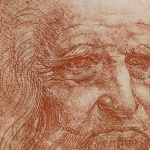The first part will retrace the genealogy of the construction of Chambord, emphasizing how it was that the edifice was wished for and thought out by its founding father, François I, with whom it cannot possibly be dissociated.
At the apex of the kingdom of France since 1 January 1515, awash in the glory of his decisive victory in the Battle of Marignano (1515), revered by some as “the new Caesar”, François I went on to undertake large-scale work in view of replacing the ancient château of the counts of Blois with a “comely and sumptuous edifice”.
Through the rare surviving archival documents, it is possible to precisely date the outset of construction: 6 September 1519. The building of Chambord went on for numerous years, but was interrupted by the defeat and capture of François I in the Battle of Pavia (1525). That said, the desire of the French monarch to possess a château that would be as remarked upon as remarkable may be understood through the prism of the relationship he maintained with his archrival, Charles V, emperor of the Holy Roman Empire.
Symbolically, Chambord is a prodigiously imposing architectural creation marked by the exceptional ambition and utter audacity of François I, who rendered it a majestic abode that would amaze and astonish whoever was to lay eyes on it for the first time.
Quite precisely, Chambord was thought out in view of making a pronounced impression on Charles V at the outset of his sojourn, on 18 December 1539. The goal was to “wow” the renowned visitor, who would go on to define Chambord as “a summum of human industry”.
The exhibition will consist in loans from prestigious French and international institutions including the Louvre, the Bibliothèque nationale française (BNF), the Archives nationales, the musée de l’Armée as well as the British Museum, the Uffizi Gallery and the National Central Library of Florence. Paintings, drawings, manuscripts, sculptures, objets d’art and archeological vestiges will complement the existing collections of the National Estate of Chambord.
These works of art will be complemented by innovative mediation supports suitable for all publics.






